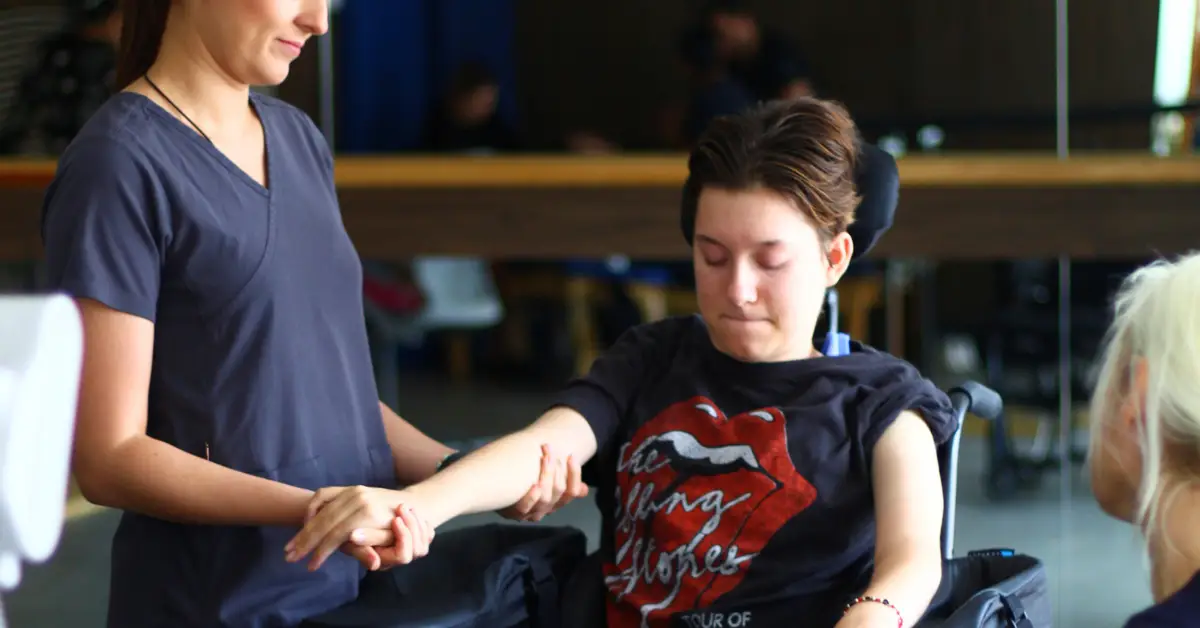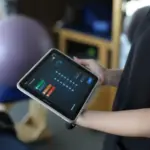In a recent Facebook and Instagram live, Attending Physician Dr Paulina hosted a live Q&A our joined by Alissa, a quadriplegic C4 complete spinal cord injury patient from the USA, who shared her experience of epidural stimulation and stem cell treatment she received at our hospital in Guadalajara, Mexico.
Alissa’s Journey: C4 Quadriplegic Treatment at Verita Neuro
Please introduce yourself and tell us about your injury.
I’m Alissa, 18 years old, and I’m from Pennsylvania, USA. I suffered a C3-C4 incomplete spinal cord injury in July 2023 after a fall. Before coming to Verita Neuro, my movement was limited to my shoulders and neck. I had no sensation or movement below that point, so it was what you’d call a classic case of a complete spinal cord injury. It was a life-altering experience, and I knew I needed to explore every possible option for recovery
How did you find out about Verita Neuro, and what was the decision-making process like?
It was actually my mum who found Verita Neuro. She was researching online, looking for any possible treatment that could help with my recovery. We came across their website and social media, where we learned about epidural stimulation and how it’s being used for spinal cord injuries, particularly cervical injuries like mine. After some more research, we decided to set up a consultation with Dr. Nir to see if I would be a candidate for the treatment. During the consultation, Dr. Nir explained what epidural stimulation was, how it works, and what kind of results we could expect. He also walked us through the entire process, including the risks and the effort it would take on my part. We had a second consultation where I underwent an MRI to see if I qualified, and after reviewing everything, we decided this was the best option for me. It was a big decision, but we felt confident that this treatment could give me a chance at a better quality of life.
What treatment had you received before coming to Mexico?
In the US, I was receiving physical therapy, but the prognosis wasn’t great. The doctors were honest with us—they said that with a complete spinal cord injury, I might regain some arm function, but nothing more significant than that. We were holding on to hope, pushing through with therapy, but there weren’t many options for real progress. My family and I were constantly searching for something more, but nothing beyond the traditional rehab was offered.
What were your expectations before starting the treatment?
I tried to manage my expectations. Based on what I had been told about spinal cord injuries, I knew that recovery wasn’t guaranteed, and progress could be very slow. When we found out about epidural stimulation, I didn’t want to set unrealistic goals. My main expectation was to give it my all and see what could happen. I approached treatment with an open mind, knowing every case is unique, and I just wanted to do my best. I wasn’t expecting miracles, but I hoped for any sign of improvement.
How Epidural Stimulation and Stem Cell Therapy Changed Alissa’s Life
What treatment did you receive from Verita Neuro?
At Verita Neuro, I underwent two major treatments. The first was receiving two epidural stimulators—one implanted in the cervical area of my spine and another in the lumbar area. The second part was stem cell therapy. I had two rounds of intrathecal stem cells, which were administered via a lumbar puncture, and one round of stem cells through an IV. These treatments, combined, target different aspects of spinal cord injury—movement, sensation, and autonomic functions like blood pressure and temperature regulation.”
How did you feel before and after the surgery?
Before the surgery, I was a mixture of nerves and excitement. It felt surreal to think that I might actually experience some kind of movement again. After the surgery, the changes were almost immediate, which was shocking. Just two days later, I was already starting to see movements during the mapping process. It was overwhelming in the best way possible. It felt like a part of me that had been dormant for so long was waking up. That first voluntary contraction in my arms was something I’ll never forget.
What improvements have you seen since the epidural stimulation surgery and stem cell treatment?
The improvements started almost immediately. Two days after surgery, I began seeing movement in my arms during the mapping sessions. By the end of my treatment, I had gained voluntary control of my triceps, which I didn’t have before. My trunk control also improved, and I’m now able to stand with assistance. The stem cell treatment has enhanced my sensation, especially internally—I can feel my muscles contract when the stimulator is on. My bladder control has improved, and my temperature regulation has normalized, especially at night. I used to struggle with nerve pain, but that has significantly reduced, and I no longer need to take Gabapentin for it.
A Day in the Life: Treatment at Verita Neuro Mexico
Can you talk us through what a typical day of treatment looks like at Verita Neuro?
A typical day at Verita Neuro was intense but rewarding. We’d start at 9 am with two hours of upper body mapping, focusing on my arms, shoulders, and hands, working to identify which electrodes stimulated specific muscles. After a three-hour break for lunch, I’d have an hour of regular physical therapy where we’d work on balance, stretching, and sometimes standing exercises. Then, the final two-hour session would focus on lower body mapping, including trunk control, leg movements, and standing. Some days, I’d also have pelvic floor therapy. On average, I’d spend about 5-6 hours a day in therapy, six days a week, but some days stretched up to seven hours.
The Mental and Physical Challenges of Recovery
What was the hardest part of the treatment for you?
The hardest part was definitely the physical and mental exhaustion. The therapy sessions were long and intense. Mapping required a lot of focus and energy, especially because I was using muscles that had been inactive for so long. The first few weeks were tough as my body adjusted to the new routine, and I had to stay mentally strong. There were days when I felt drained, but I knew that the effort I put in each day was crucial to my progress.”
How has your mental outlook changed since starting the treatment?
My mental outlook has completely transformed. Before this treatment, it was hard to stay hopeful because progress felt so uncertain. But now, after seeing the improvements, I feel empowered and motivated. I have a clear path forward and I know recovery is possible. It has shifted my perspective on what’s achievable, and I no longer feel like my future is as limited as it once seemed.
Looking Forward: Alissa’s Goals for the Future
What are your goals for the future post surgery?
My immediate goal is to continue working on standing independently and transitioning full-time to using a manual chair. I want to gain more control over my arms and legs, and eventually be able to take steps, even if it’s with assistance. Long-term, I aim to become more independent in daily tasks like grooming, dressing, and feeding myself. Ultimately, I’d love to reduce my reliance on caregivers and regain more control over my life. I want to fully interact with the world around me, instead of just observing it.
What advice would you give to someone considering Epidural Stimulation and Stem Cell treatment?
My advice would be to fully commit to the process. This treatment can change your life, but only if you’re ready to put in the work. You need to come in with the right mindset—understand that it’s going to be intense, but every bit of effort you put in will be worth it. Don’t be afraid of the unknown; trust the process and stay focused on your goals. The results are possible, but you have to push yourself every day to make the most of it.
The above is not a verbatim transcript of Alissa’s live. Some comments have been altered or re-arranged to improve the reading flow. You can watch the full live show on our YouTube channel.





